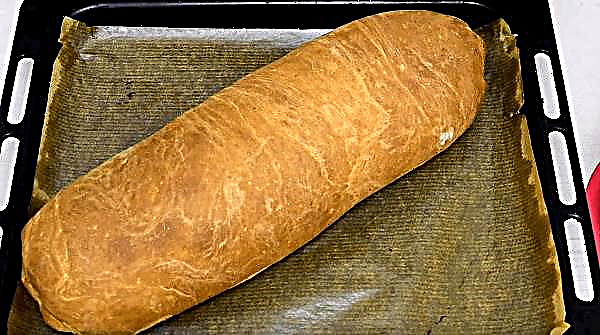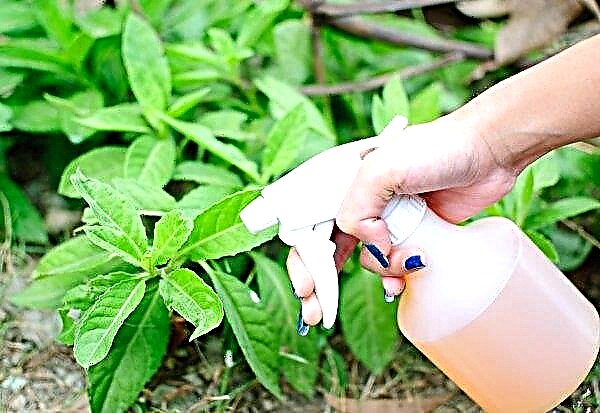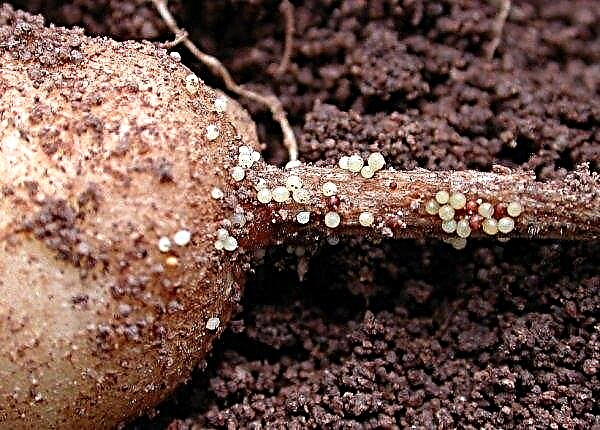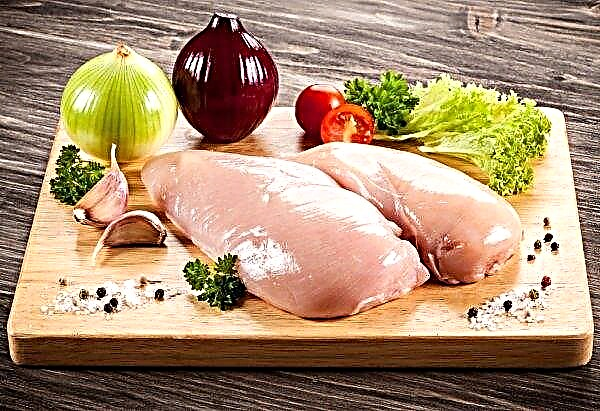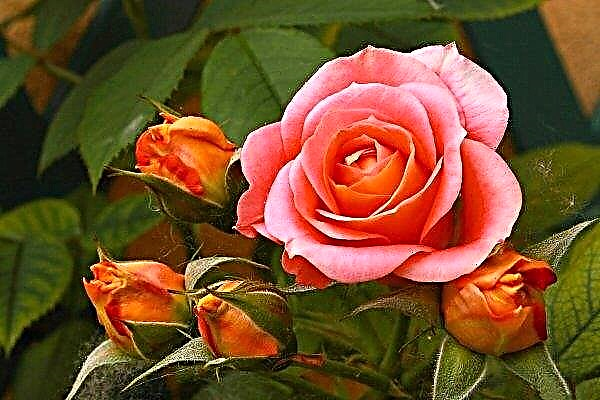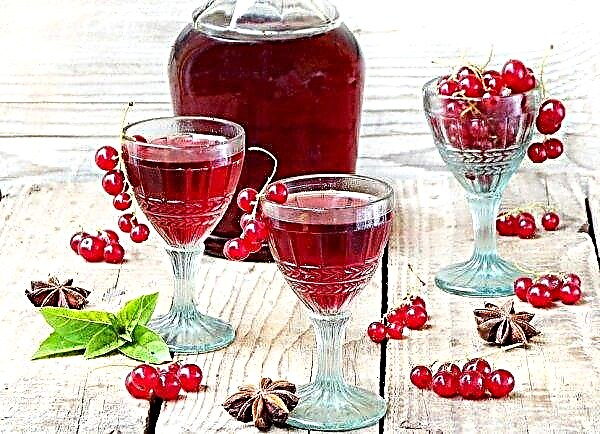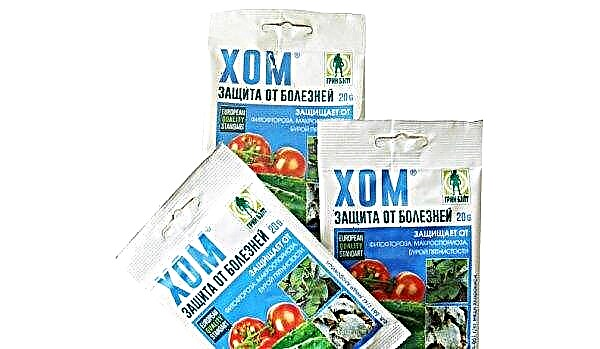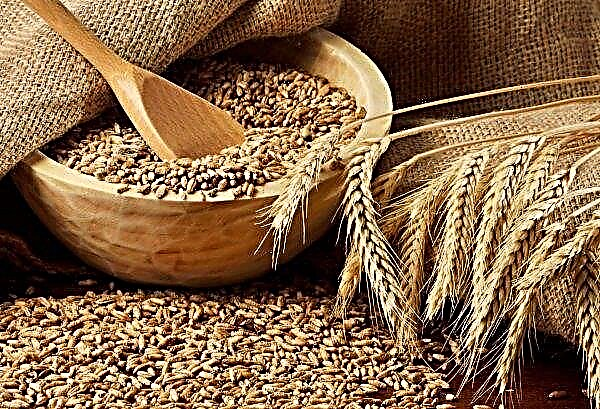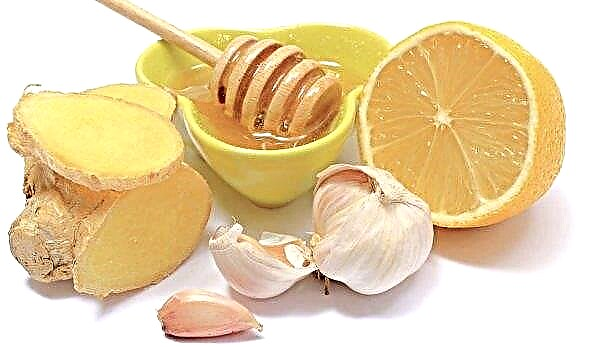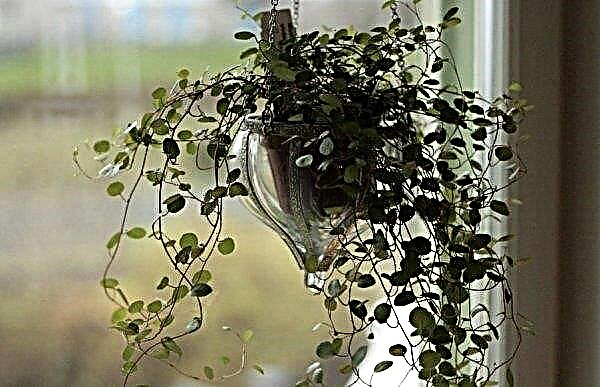Pines of different types all year round decorate city parks and alleys or summer cottages with bright and lush greenery. However, with errors in care or adverse external factors, the trees become ill. One of the common ailments of coniferous culture is shute, and it will be discussed below.
What a disease
From the German language, the word schütten, from which the name of the pine disease is derived, is translated as "strew". With the course of the disease, the needles of the trees lose their juicy green color and crumble. The causative agent of shute is ascomycetes or marsupials. Parasites breed by spores, can be carried by wind, insects.
Did you know? Science knows 64 thousand species of ascomycetes. Not all varieties are pathogenic, the family includes baker's and brewer's yeast, as well as many instances that are used in pharmacology in the manufacture of drugs.
The danger of the disease is that it affects both young pine trees and adults, over 15 years old, trees. Without appropriate treatment, the culture loses its decorative properties and gradually dies.
If the problem is not detected on time, not treated, then during the development of the plant, violations will be observed:
- in tissue respiration;
- photosynthesis process;
- ability to absorb nutrition and moisture;
- the synthesis of substances responsible for growth and fruiting.

Causes of occurrence
Fungal disease occurs primarily in conditions of high humidity. Plants planted too close to each other are poorly ventilated, the trunk circle is clogged with parasitic herbs.
Excess moisture is possible on clay lands, in places where groundwater is located close to the surface. In such areas, the root system is wetted, which is immediately attacked by mushrooms. An excess of watering and fertilizers can provoke a disease, weaken immunity. The high moisture content is in a dense crown, therefore it is important to carry out thinning pruning.
Important! An annual, sanitary, spring haircut is necessary, since damaged shoots are weakened and open to various diseases.
Types of Shute
The fungus can affect not only the pine tree. They are affected by several species of shute, all of which are described below.
Other conifers are also subject to this ailment:
- spruce;
- cedar;
- juniper;
- fir;
- yew;
- thuja.
Video: coniferous diseases
The present
The culprit is the mushroom Lophodermium seditiosum, which affects mainly young specimens for no more than 5 years. In plantings of different ages, it “works” paired with Lophodermium pinastri or common shute, which appears on trees older than 10-15 years.
The first symptoms appear in early spring. The needles are covered with a barely noticeable plaque, which gradually becomes a brown hue. If nothing is done at this time, the needles will begin to crumble. In the autumn, the needles are covered with cup-shaped black spots that serve as a repository of spores.Important! In the spring, a receptacle of spore cells, the scientific name for apothecia, will spread the disease further.
Snowy
The ailment got its name due to the fact that it develops under conditions of temperature below the zero mark on the thermometer. This disease is inherent in trees growing in highlands where snow can lie most of the year. Also in those regions where the crust is at least half a meter thick.
 After the snow melts on the pine needles, a gray coating remains. After a while, it darkens, acquiring a red tint. Without treatment, the needles eventually whiten and crumble, although they do not fall over a long period.
After the snow melts on the pine needles, a gray coating remains. After a while, it darkens, acquiring a red tint. Without treatment, the needles eventually whiten and crumble, although they do not fall over a long period.
Gray
Symptoms of gray shute are similar to snow, except for the region of distribution. The causative agent is active in early summer. The affected needles turn yellow, then turn gray. A distinctive feature of the disease is a purple-brown streak that separates healthy tissue from patients. The most vulnerable crops are 3–10 years old.
Brown
The brown variety of the disease is activated in early spring, March-April. However, spores fall on the needles before wintering. Apothecia survive the winter under the snow, hitting a plant weakened by cold. In the spring, the needles are already covered with a dark brown coating. The needles die off, but do not fly around, sticking to the sticky coating.

Treatment
Before talking about the treatment of conifers, it is advisable to familiarize yourself with the methods of prevention.
You can prevent the disease if you follow some measures:
- It is better to select seedlings in the nursery, checking their appearance.
- Planting crops on a flat or elevated territory, where moisture does not accumulate.
- The soil should be sandy or sandy, it does not hold water, but perfectly passes it.
- Need protection against draft and gusty wind, at least for young specimens.
- If groundwater is located close to the surface, arrange a good drainage layer in the planting hole.
- Fallen needles and branches should be removed from the trunk circle, spores can winter in them.
- Landing should not be thickened. To maintain a distance of at least 4 m between the plants, immediately uproot the entire self-sowing.
- Perform sanitary and thinning pruning annually.
- In spring, trees need preventive treatment with a Bordeaux mixture of 1%.
Video: spring treatment of conifers from diseases and pests
They treat the plant with the same preparation, only with a 3% solution, performing 2-3 sprayings until the symptoms disappear. You can use the fungicide "Hom", which received good reviews from gardeners. Pine is sprayed with a solution prepared in a proportion of 40 g of the drug per 10 l of water. The procedure is carried out in the evening, preferably in cloudy weather. If necessary, the treatment is repeated after 3 weeks.
Knowing the description of the disease and the causes, you can take preventive measures against its spread. The more attentive the gardener is, the less chance the fungus will have. Pay due attention to the conifer and he will thank you with a beautiful view.Did you know? Pine essential oil is used in the treatment of neuralgic and psychiatric disorders. Even the furniture made of pine wood has a calming effect, so street benches for sanatoriums and hydrotherapy are made of it.

